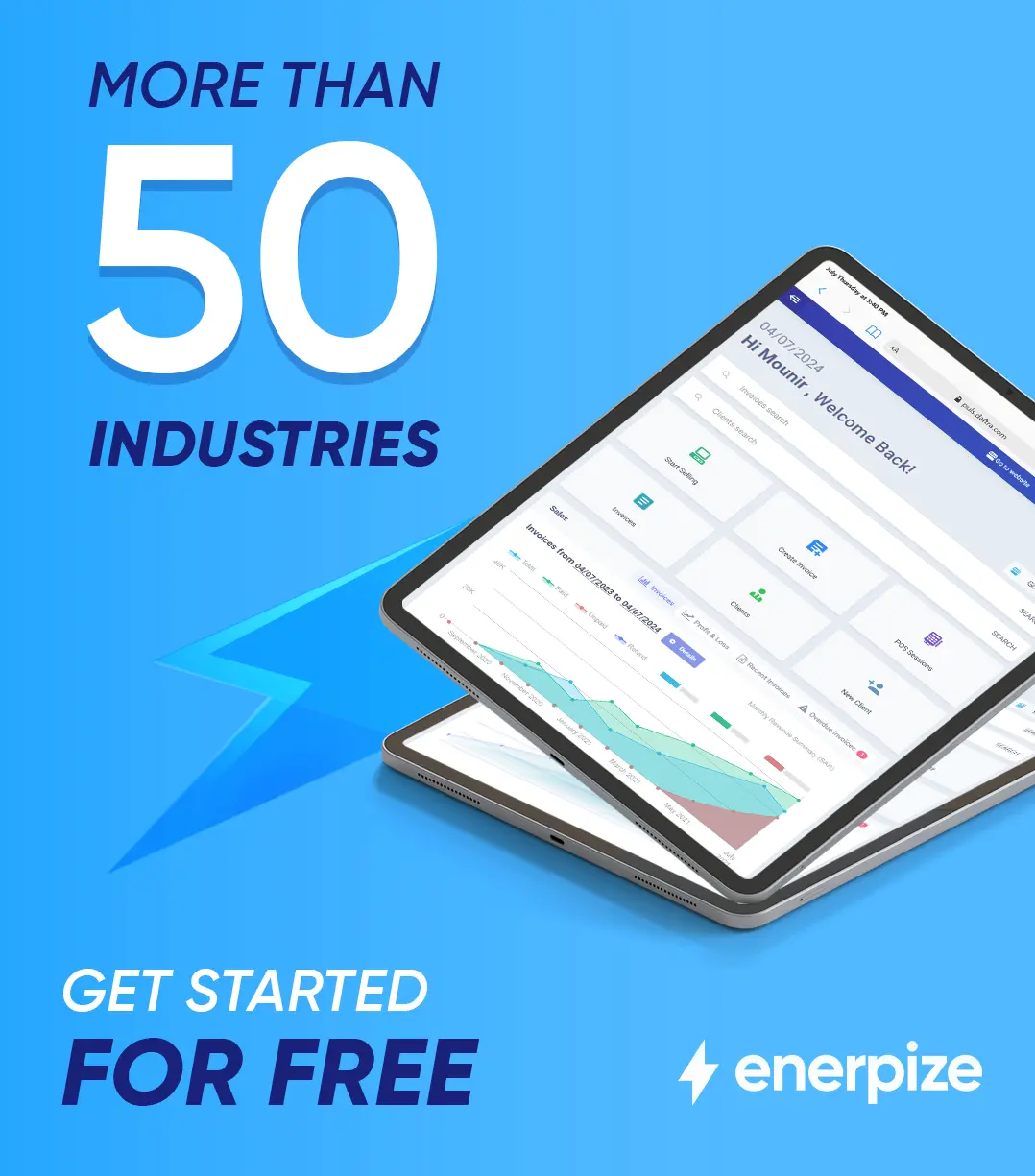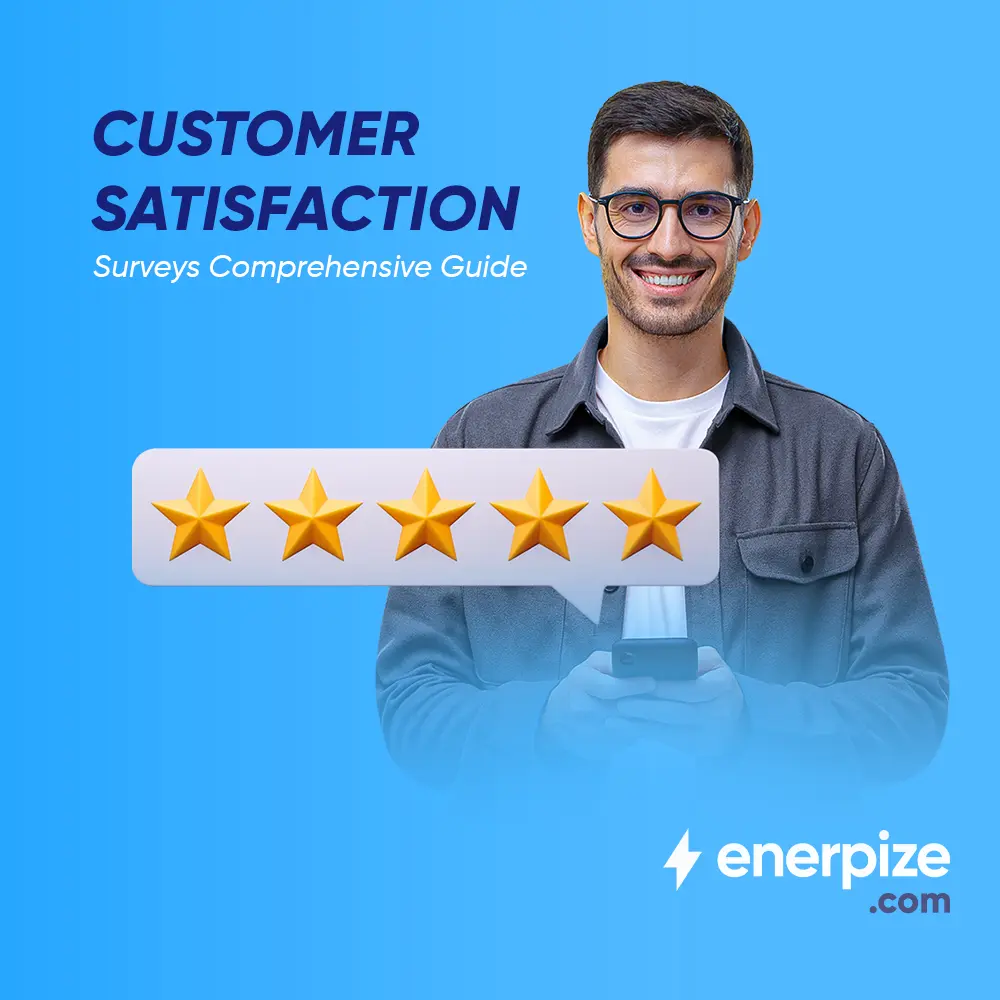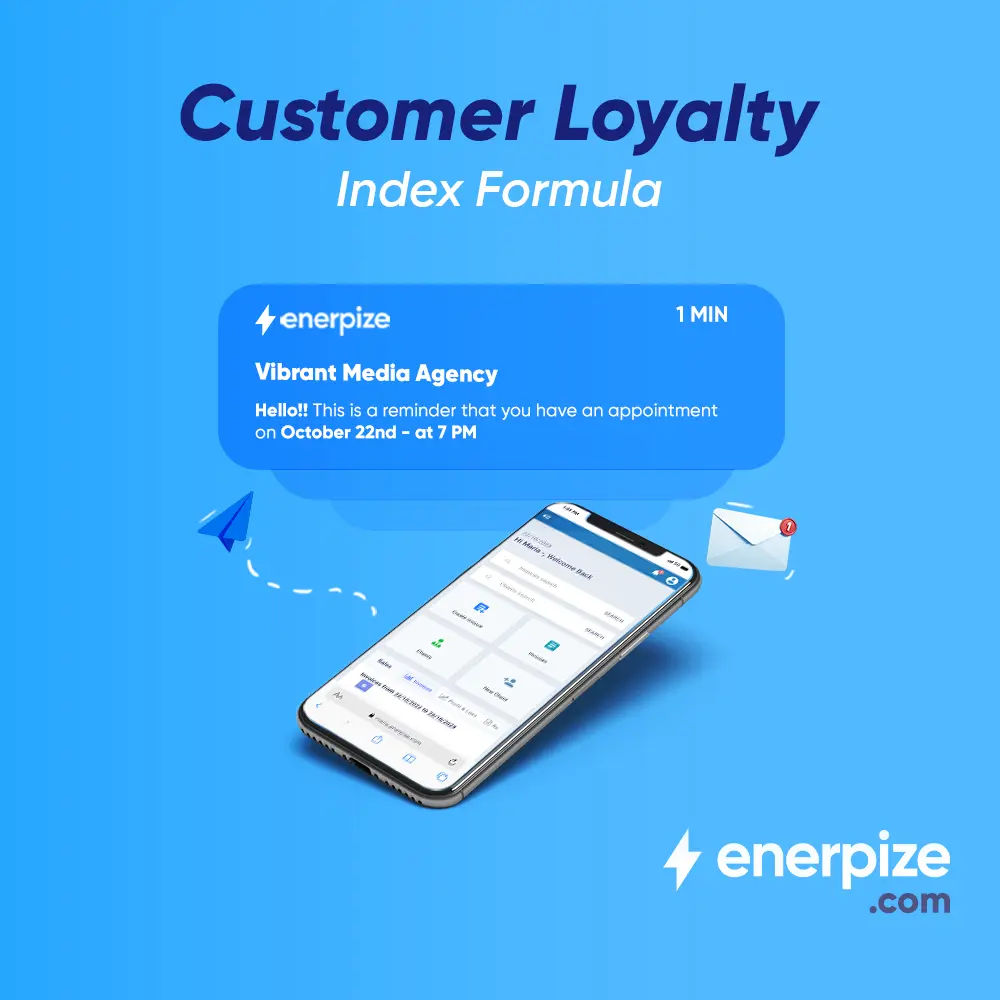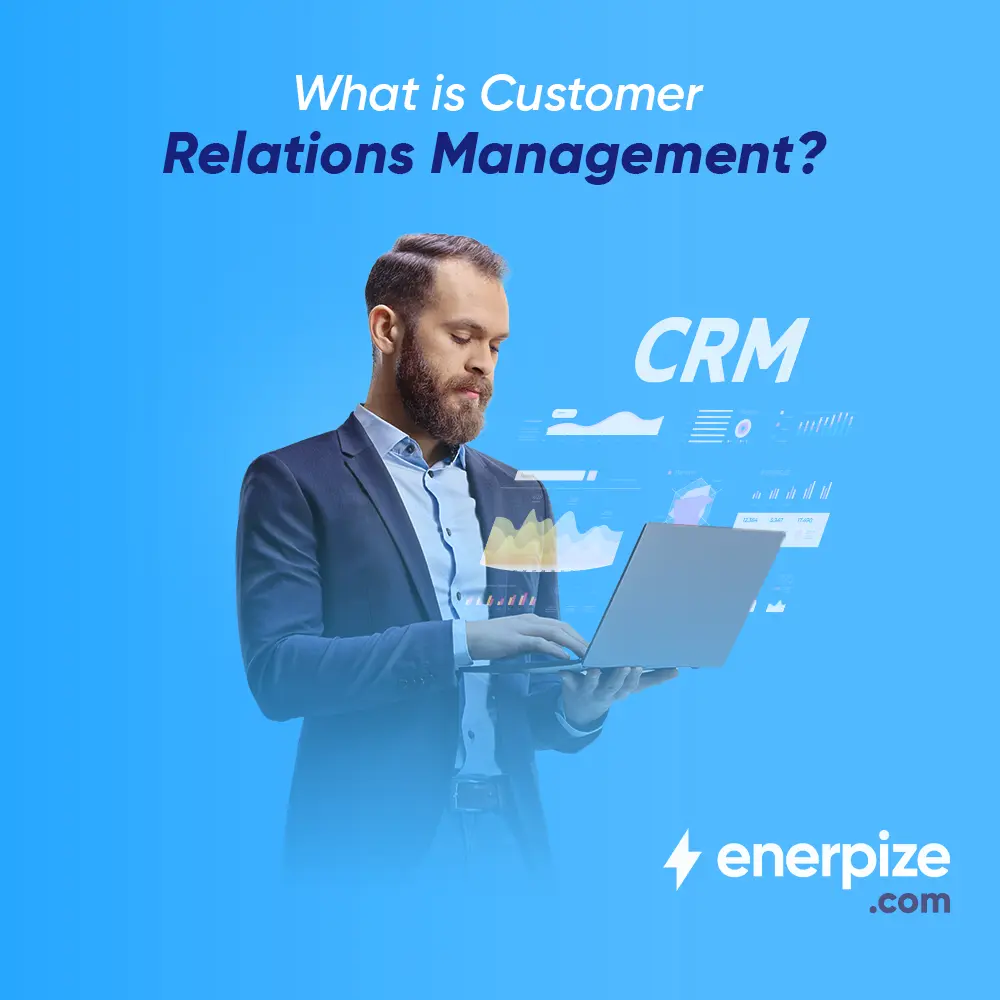Author : Haya Assem
Reviewed By : Enerpize Team
How to Craft a CRM Strategy to Achieve Its Objectives
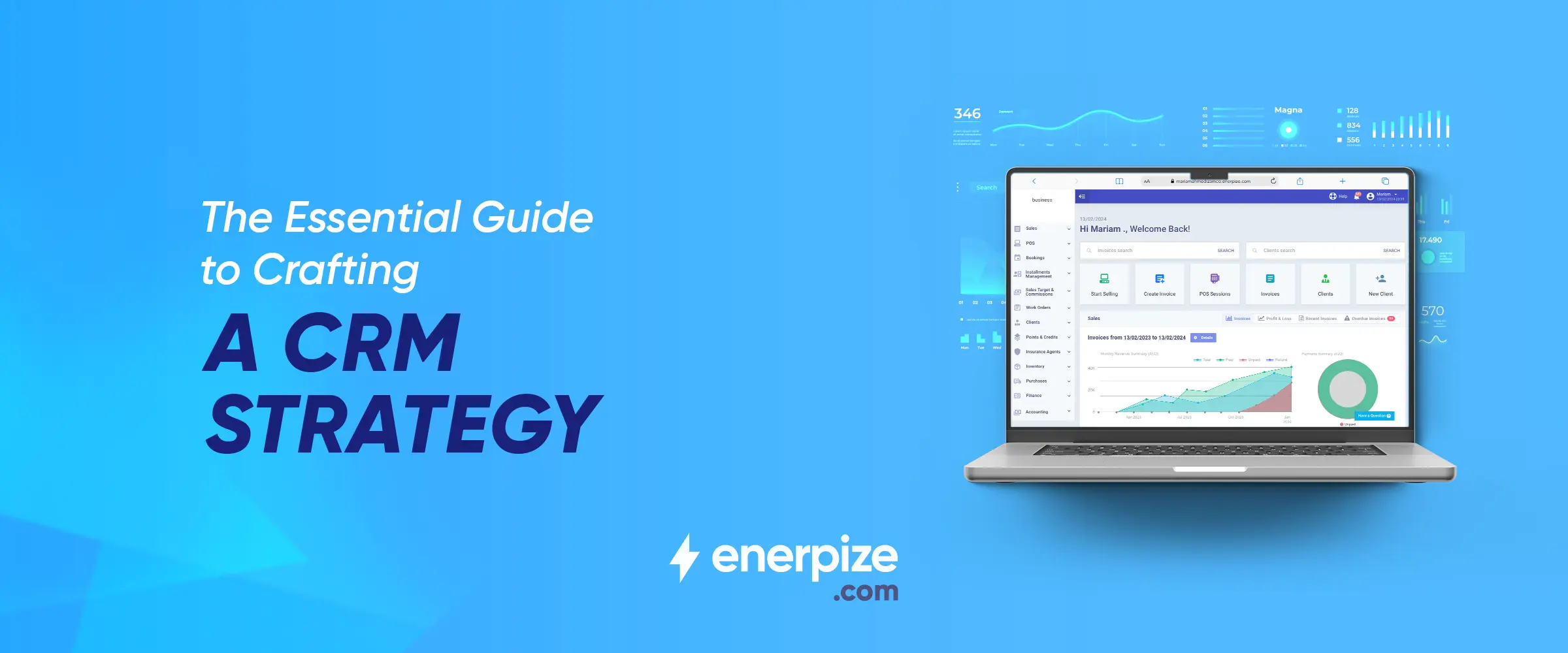
Customers are the most important element of a company's success since the entire business is dependent on their satisfaction and likelihood of repurchasing the product or service. As a result, developing a strategy to manage a company's relationships with its customers is considered a critical component of an effective business.
A well-defined customer relationship management (CRM) strategy will assist you in retaining customers while also ensuring their satisfaction and loyalty. This strategy is necessary for improving operational efficiency, increasing customer value, and attaining long-term business success.
Moreover, a robust CRM strategy is critical for understanding customer behaviors and preferences and also promotes better communication and coordination among divisions, enabling a seamless and coherent approach to customer interactions.
By leveraging CRM tools to analyze data, businesses can tailor their products and services to better meet customer expectations, thereby enhancing the overall customer experience.
Key Takeaways
- Developing a successful CRM strategy involves defining clear objectives, identifying target customers, mapping the customer journey, understanding your product, implementing CRM software, and consistently measuring performance using KPIs, data analysis, and feedback mechanisms.
- Set CRM objectives to enhance customer satisfaction by exceeding expectations. Improve organizational efficiency through CRM software implementation. Focus on customer retention, optimize sales performance, reduce acquisition costs, enhance customer service, and build lasting relationships.
- Efficiently measure CRM objectives by aligning them with business success. Track various KPIs across sales, marketing, and customer-related metrics. Evaluate sales cycle stages, lead quality, upsell and close rates, CLV, CAC, churn, NPS, and resolution time for comprehensive insights and improvements.
- Choose the best CRM system by understanding your business needs, engaging with vendors aligned with your requirements, specifying the system type, listing essential features, comparing options, and establishing a realistic budget.
- CRM Process: Drive brand awareness through strategic marketing, acquire leads with effective strategies, convert leads to customers using sales tactics, build lasting relationships, upsell to maximize revenue, ensure customer retention, and evaluate outcomes for continuous improvement.
How to develop a CRM strategy?
A customer relationship management strategy is a method for developing relationships between a company's sales, marketing, and support departments and its customers.
Crafting an effective CRM strategy entails several steps to ensure that the plan is well-defined, aligned with business objectives, and effectively implemented.
6 Steps to develop a successful CRM strategy
State your CRM Objectives
Defining business objectives is the foundational step in developing a successful CRM strategy. Effective business objectives should be specific, measurable, aligned with the company's mission and vision, and realistic in achievability. They should have clear timeframes, and prioritize key goals.
To establish your business objectives, you should rely primarily on your company's mission and vision to ensure that the objectives contribute to the overarching purpose of the organization, customer feedback to understand their preferences, expectations, and levels of satisfaction, and market analysis that includes industry trends, competitive landscape, and customer needs.
Business objectives example:
- Increasing customer retention rates
- Improving customer satisfaction scores
- Boosting conversion rates in sales
- Decrease the customer churn rate
Identify your Target Customers
Identifying the target customer enables businesses to tailor their interactions, communication, and offerings to the specific needs and preferences of distinct customer segments. This strategic alignment fosters personalized experiences, efficient resource allocation, and improved customer retention.
Companies can enhance marketing effectiveness, develop products that meet customer needs, and deliver superior customer experiences by focusing their efforts on their target customers.
Consider the following points while you go through the process of identifying target customers:
- Demographics
- Behavioral Patterns
- Communication Preferences
- Customer Feedback and Reviews
Define your Customer Journey
A customer journey is the complete sum of the interactions customers have with a company and its products or services. To define your customer journey, you must put yourself in the shoes of the customer and go through the entire process, from pre-sales and sales to CRM and after-sales.
This will help you identify areas for improvement, understand customer interactions, tailor marketing strategies, optimize sales processes, and predict customer behaviors. As a result, customers will have a better experience.
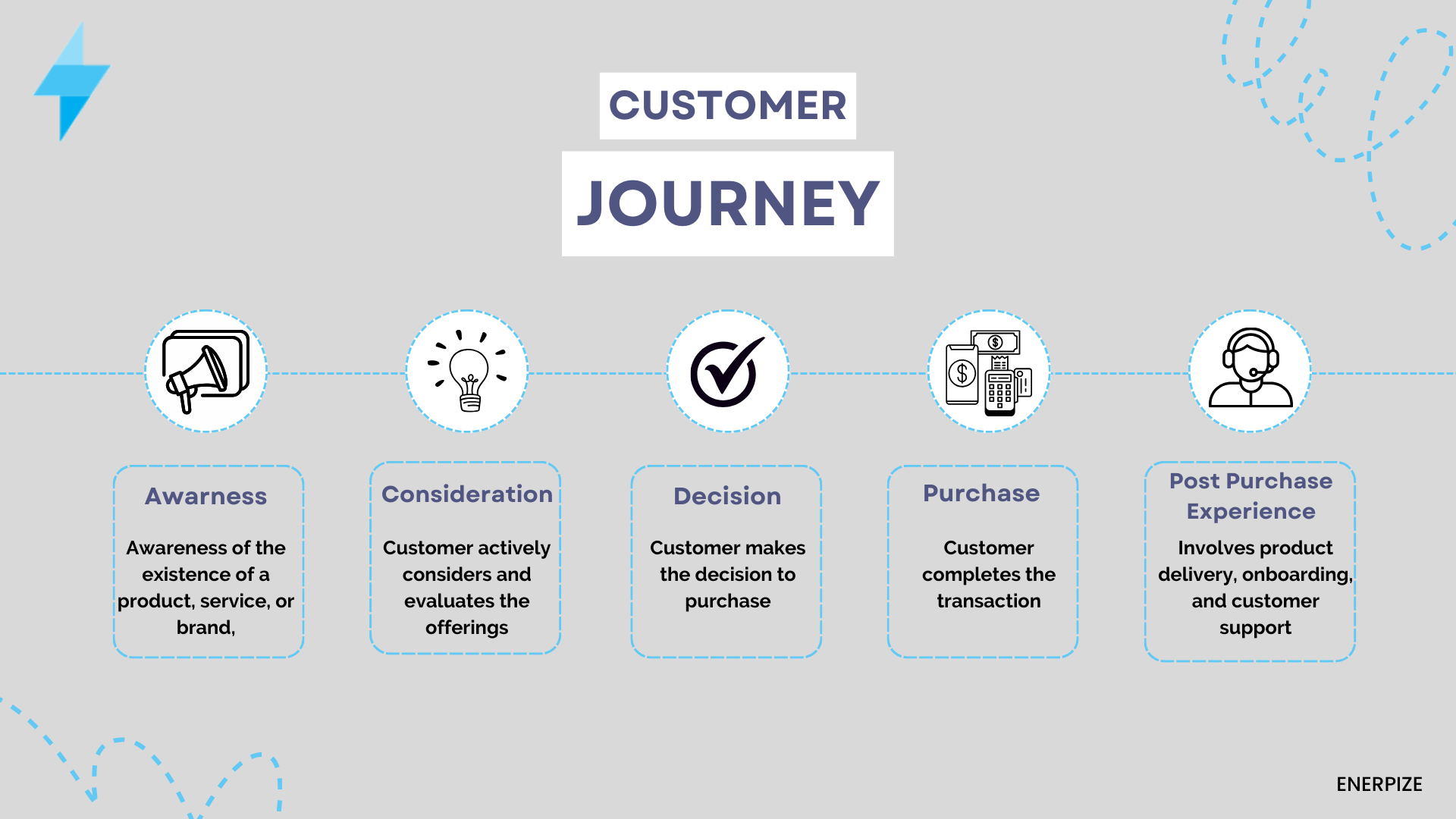
Know your Product/ Service
At this stage, you should analyze your product to improve it. Also, take your time to understand your product/service and identify what makes you better than your competitors and why customers should choose you over them.
Identify your product/service position in the market by asking yourself questions such as:
- How does your brand image align with the perceptions and expectations of your target customers?
- What messages do you need to deliver to your customers?
- What unique features does your product/service offer in comparison to competitors?
- What are the benefits that you want to highlight?
- Why should customers choose you over your competitors?
Implement CRM Software
Implementing CRM software is a wise move since it allows you to easily engage with your clients and follow up with them, understand their needs and behaviors, and develop a deeper relationship with them.
CRM will also offer you all of the data you need to make your marketing strategies more dedicated and target the right audience, boost sales, and improve customer service for an overall remarkable experience.
Enerpize CRM Software facilitates interaction with clients by organizing appointments, and reservations, and following up with them, as well as automating online billing with multiple payment options. Enerpize also provides a seamless experience of managing your clients' invoices, following up on their dues, renewing or canceling memberships, credit charges, and any other client-related issues.
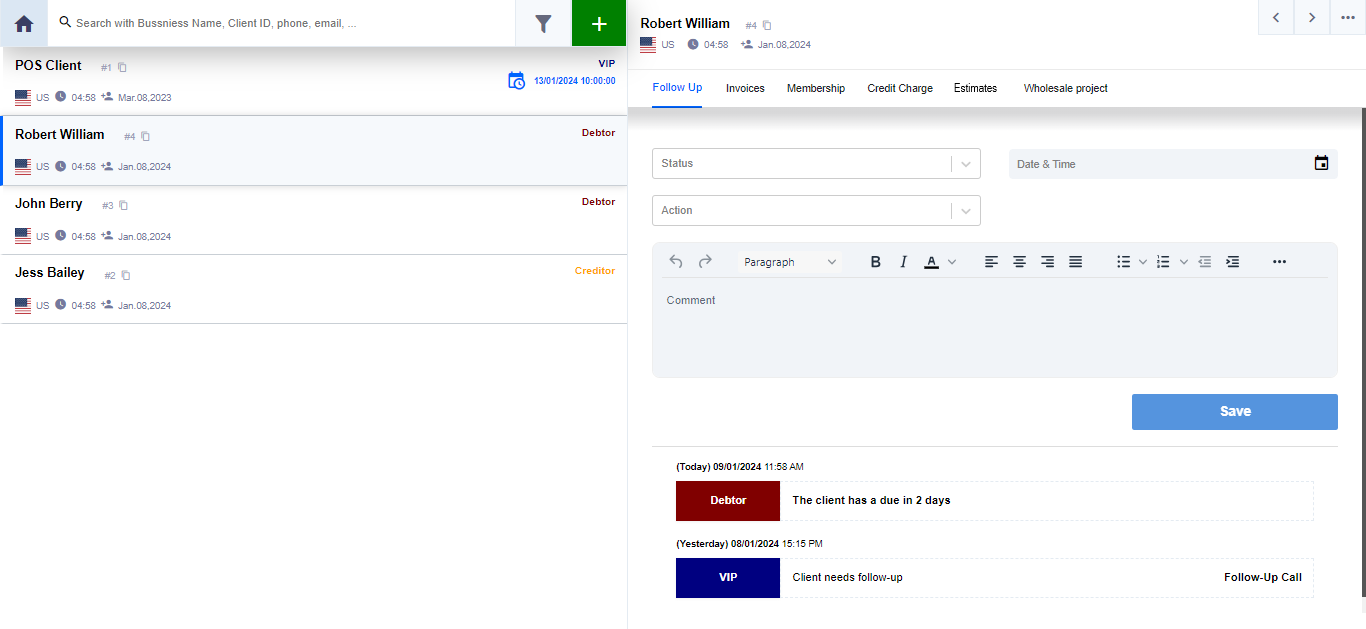
Measure your performance
Assess your effectiveness and achievements in various aspects of your work or activities. Utilize key performance indicators (KPIs), data analysis, and feedback mechanisms to gain insights and continuously enhance your performance.
7 CRM Objectives To Set For Your Business
Objectives are your track and to ensure that you’re on the right track you need to set them carefully based on your business industry, needs, and potentials. Objectives will provide you with directions and a destination to reach, they will help you focus your efforts in the right place, predict potential challenges, and measure success.
Well-crafted objectives serve as a compass, guiding the organization toward long-term success. Here are the most essential business objectives to achieve:
Enhance Customer Satisfaction
You need to focus on meeting or exceeding customer expectations by providing high-quality products/services, and support. Keep customer satisfaction as a primary focus, by enhancing your offerings through the implementation of customer feedback to continually improve your products/services.
Enhance Organizational Efficiency
Improving organizational efficiency involves automating workflow, optimizing internal processes, reducing manual workloads, and collecting and organizing customer data. To do so you need to implement CRM software.
CRM software collects and organizes customer data, offering important insights into preferences, behaviors, and trends. Businesses may improve decision-making processes, personalize customer interactions, and eventually increase overall business efficiency.
The main focus is to build a more responsive business environment that allows teams to focus on high-value activities and adapt quickly to changing circumstances.
Improve your Customer Retention
Retaining current customers is much easier than acquiring new ones since you don't have to go through the whole process with them because they already know your product/service.
The objective is to increase each customer's total value during their journey with the business. Understanding customer needs, identifying upsell and cross-sell opportunities, and implementing strategies that motivate repeat purchases all contribute to sustained revenue growth.
Improve Sales Performance
Improving sales performance entails improving the entire sales process. This involves lead generation, effective communication, and closing deals efficiently. The objective is to boost conversion rates, increase deal value, and drive overall revenue growth.
Reduce Customer Acquisition Costs
The objective is to implement strategies to attract new customers at a lower cost while maintaining the quality of marketing efforts. CRM can help you reduce your expenses through the following:
- Identify and focus on the most relevant and high-potential customer segments.
- Utilize cost-effective digital marketing channels such as social media, content marketing, and search engine optimization (SEO) to reach a broader audience with lower acquisition costs.
- Encourage satisfied customers to refer others through referral programs.
- Create valuable and shareable content to attract and engage potential customers.
- Personalizing communication with potential customers by leveraging customer data stored in CRM systems.
Optimize Customer Service
Optimizing customer service aims to provide timely and effective support. This involves addressing customer inquiries, resolving issues promptly, and ensuring a positive customer experience.
To provide exceptional customer service, there must be a sort of collaboration and easy communication between the sales, customer support, technical, and marketing teams in order to enhance overall customer satisfaction and loyalty.
Build and Maintain Customer Relationships
Developing and maintaining strong customer relationships requires continuous efforts to understand individual customer needs, preferences, and behaviors. By fostering open communication and personalized interactions, businesses aim to build trust and loyalty, creating a foundation for long-term relationships.
How to measure your CRM objectives efficiently?
Evaluating if your CRM objectives are effectively aligned with the success of your business is a critical step in determining whether you're on the right path. This phase involves tracking a variety of KPIs at various stages of the customer lifecycle.
There are different types of metrics to utilize such as:
Sales metrics
- Sales cycle length
- Upsell Rate
- Quality of Leads
- Close Rate
Marketing Metrics
- Customer Lifetime Value (CLV)
- Customer Acquisition Cost (CAC)
Customer-related metrics
- Churn and Retention Rate
- Net Promoter Score (NPS)
- Average Time to Resolution
Length of Each Stage of the Sales Cycle
Defining sales cycle stages is crucial for understanding the customer journey. Tracking lead progression times helps identify efficiency insights and potential improvements, streamlining processes for enhanced overall effectiveness.
Quality of Leads
Utilize lead scoring to assess lead quality based on criteria like demographics and behavior. Regularly evaluating conversion rates of high-scoring leads ensures a focus on the most promising opportunities.
Upsell Rate
Monitor the percentage of existing customers who upgrade or purchase additional products/services. Successful upselling strategies contribute to increased revenue and customer satisfaction, maximizing the customer relationship.
Close Rate
Measure the percentage of leads successfully converted into closed sales. Analyzing factors influencing close rates enables adjustments in sales strategies, ultimately enhancing conversion efficiency and performance.
Customer Lifetime Value (CLV)
Calculate the total revenue generated by a customer throughout their entire relationship with your business. Monitoring CLV trends helps tailor strategies for different customer segments, optimizing long-term profitability.
Customer Acquisition Cost (CAC)
Determine the cost incurred to acquire each customer. Comparing CAC against CLV ensures a positive return on investment, indicating the efficiency and sustainability of customer acquisition efforts.
Churn and Retention Rate
Track the number of customers lost (churn rate) and the percentage of customers retained (retention rate). Analyzing reasons for churn guides the implementation of effective retention strategies to strengthen customer relationships.
Net Promoter Score (NPS)
Collect customer feedback through NPS surveys to gauge their likelihood of recommending your product or service. Monitoring changes in NPS over time provides insights into overall customer satisfaction and loyalty.
Average Time to Resolution
Measure the time taken to address and resolve customer issues. Setting benchmarks for resolution time enhances customer service efficiency, contributing to a positive customer experience and satisfaction.
How to choose the best CRM system for your business?
Choosing the ideal CRM system for your company is an important choice that may have a big influence on your entire operations and relationships with customers. The following steps will help you make an informed choice:
- Understand your business needs and challenges: Analyze and understand your business's needs and challenges in order to pick and implement a CRM system that is tailored to your specific requirements.
- Engage with vendors that align with your requirements: Connect with vendors who closely match your business needs, ensuring a more effective partnership and successful CRM system integration.
- Specify the type of CRM system required: Clearly define the specific type of CRM system that best suits your business model, taking into account factors like scale, complexity, and industry-specific needs.
- List the features essential for your CRM: Identify and compile a comprehensive list of features crucial for your business operations, ensuring the selected CRM system aligns with your functional requirements and objectives.
- Compare CRM options, forming a shortlist: Evaluate multiple CRM software options, comparing their features and capabilities. Create a shortlist of platforms that best meet your business needs and align with your objectives.
- Establish a budget for your CRM investment: Determine a realistic budget for your CRM investment, considering both software costs and potential implementation expenses. This ensures a cost-effective and well-planned CRM strategy.
- Main stages and steps in the CRM process: To efficiently manage and maintain relationships with customers, the CRM process includes various stages and steps. The exact structure might vary depending on the specific needs of each business, however, the process can typically be divided into the following steps:
Generate brand awareness: Employ strategic marketing initiatives to increase brand visibility, fostering recognition and familiarity among your target audience.
Acquire leads: Implement lead generation strategies to attract potential customers and build a strong base of prospects interested in your products or services.
Convert leads into customers: Employ effective sales tactics to convert leads into paying customers, ensuring a smooth transition through the sales funnel.
Build a relationship and acquire loyalty: Build strong connections with customers by delivering outstanding experiences, nurturing loyalty, and promoting enduring relationships.
Promote Upselling: Identify opportunities to offer additional products or services to existing customers, maximizing revenue and enhancing the value of each transaction.
- Maintain customer retention: Implement retention strategies to keep existing customers satisfied, reducing churn, and fostering customer loyalty over the long term.
Evaluate outcomes: Assess the performance of implemented strategies, reviewing data-driven insights to understand the impact and effectiveness, facilitating informed decision-making and continuous improvement in business processes.
CRM is easy with Enerpize.
Try our CRM module to manage your customer relations

